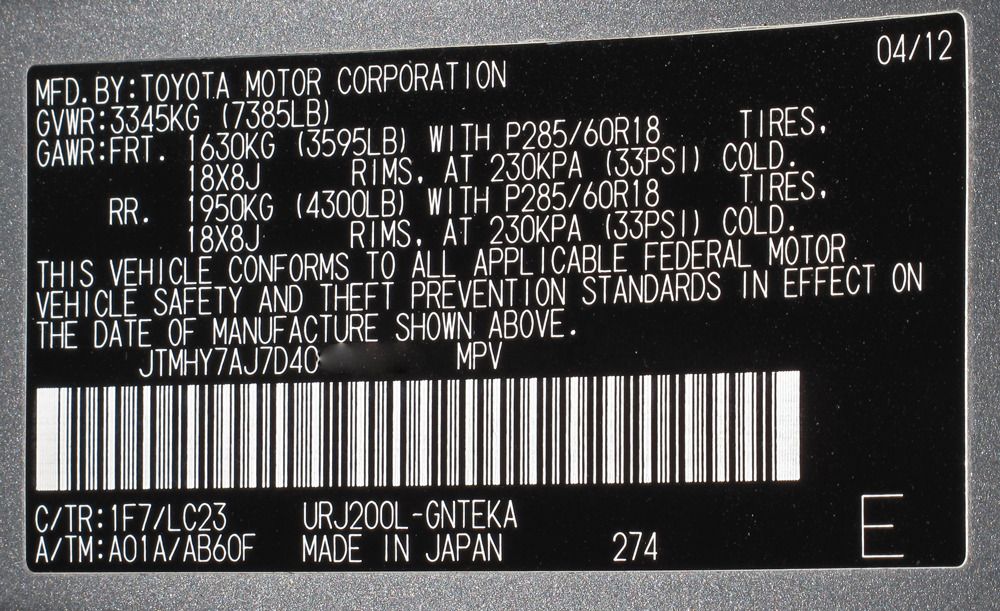No such thing as a stupid question - after all, not one of us knows what we do not know.
The GAWR (Gross Axle Weight Rating) is the maximum allowable total operating weight supported by an axle (including passengers, cargo, fuel and wheel/tire unsprung weight) over which the vehicle is deemed unsafe by the manufacturer. When you had your rig weighed and determined that the front GAW (Gross Axle Weight) was 3600 pounds, you found that you are over the GAWR of 3595 pounds for the front axle. Whatever condition your rig was in when it was on the scales should be the maximum weight at which you ever operate your vehicle unless you can shift some of that weight off the front axle and onto the rear axle.
The GVWR (Gross Vehicle Weight Rating) is the maximum allowable total operating weight of the vehicle, including passengers, cargo, fuel, etc. In the case of your LC200, this weight should be distributed such that no more than 3595 pounds is supported by the front axle, no more than 4300 pounds is supported by the rear axle, and the total weight should be no more than 7385 pounds.
Exceed any of these maximum weights and bad things can happen like major drivetrain, suspension or chassis failures.
Toyota takes these limits very seriously. For example, ever wonder about this yellow sticker found on your Driver Side door jamb?
It indicates that equipment was added to your vehicle after the limits were set that have reduced the Load Carrying Capacity of your vehicle. These additions are usually PIO (Port Installed Options) like the rear entertainment system, etc.
What it means is, that your vehicle can no longer carry the load specified in the Owner's Manual. So, when you see this in your OM:
You need to reduce the Total Load Capacity stated in the manual from 1295 pounds / 585 kilograms by the amount on the yellow sticker which results in a new Total Load Capacity of 1278 pounds / 577 kilograms.
Technically, every time we change our vehicles by adding or subtracting weight, we should be adjusting the Total Load Capacity. Add 200 pounds of bumper/winch? Then the new Total Load Capacity is reduced to 1095 pounds.
Then, trailers, trailer weight and tongue weight is a whole 'nother level of complication.
HTH




